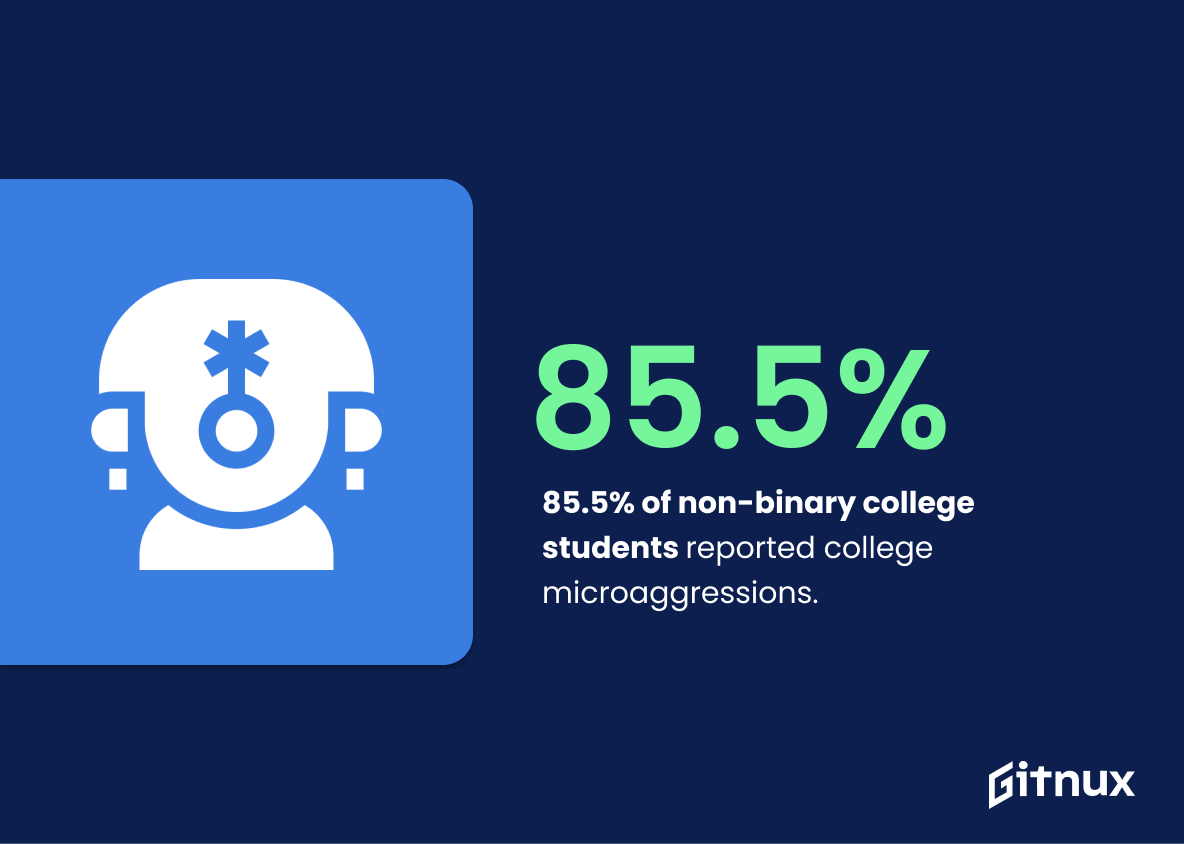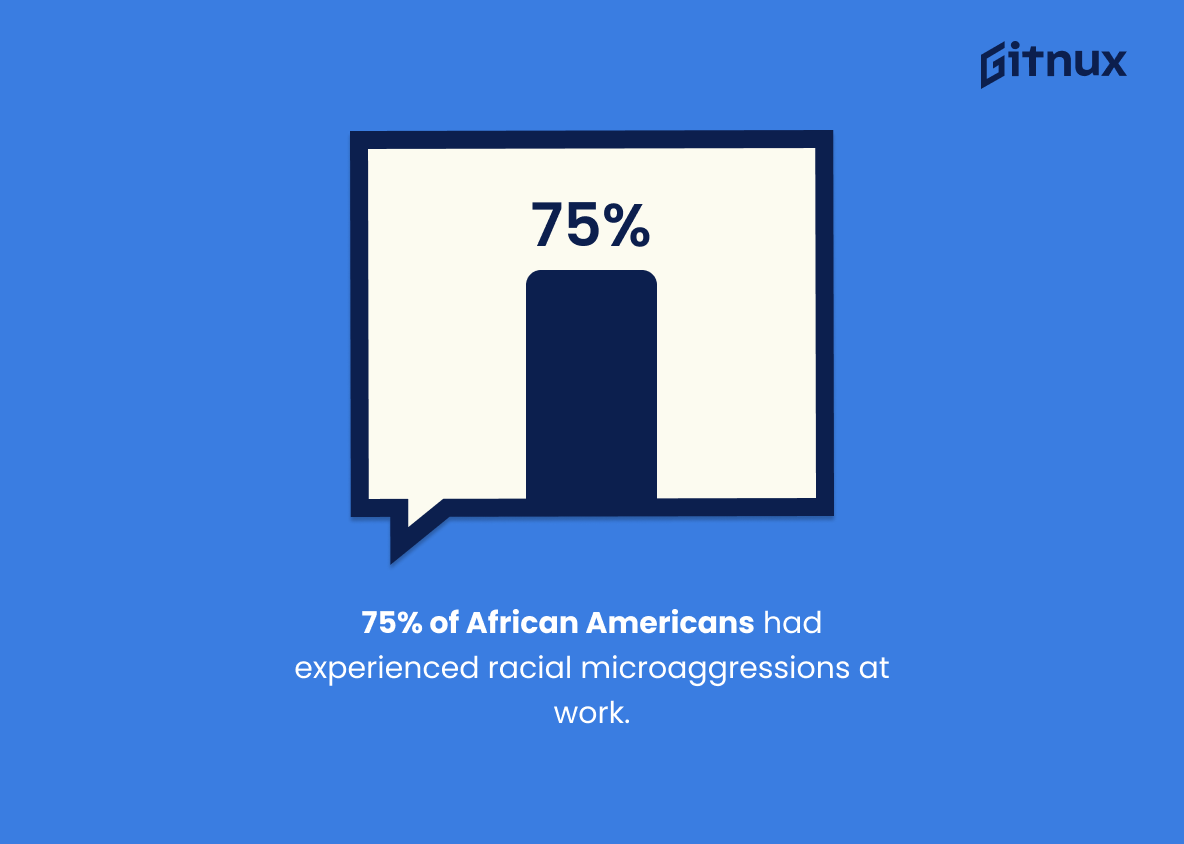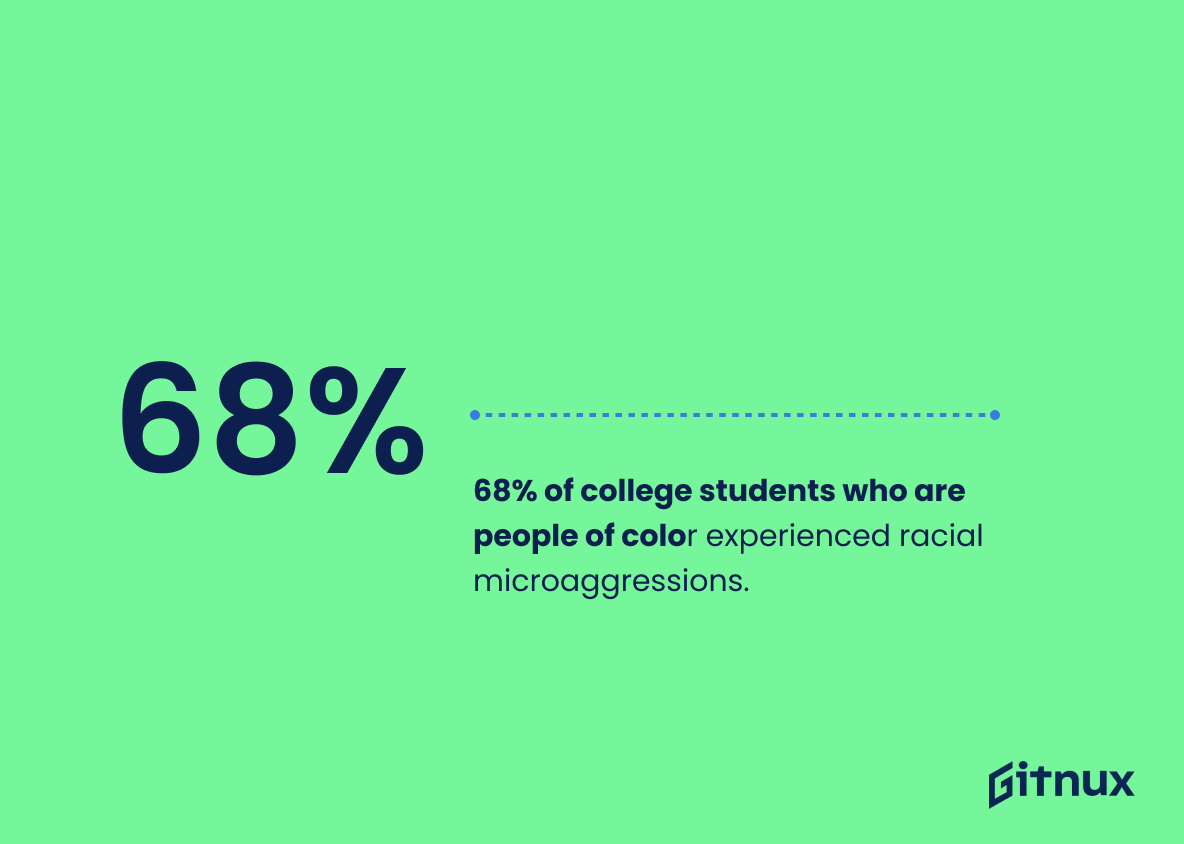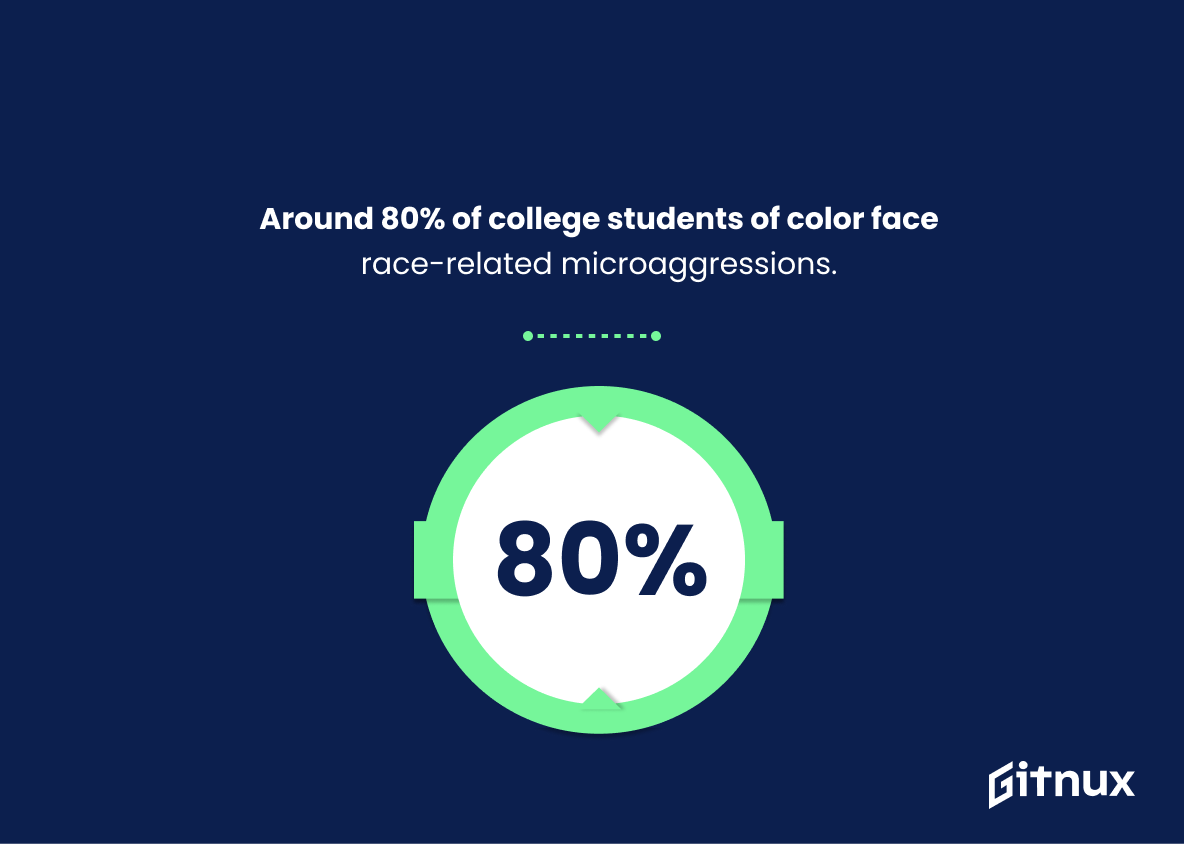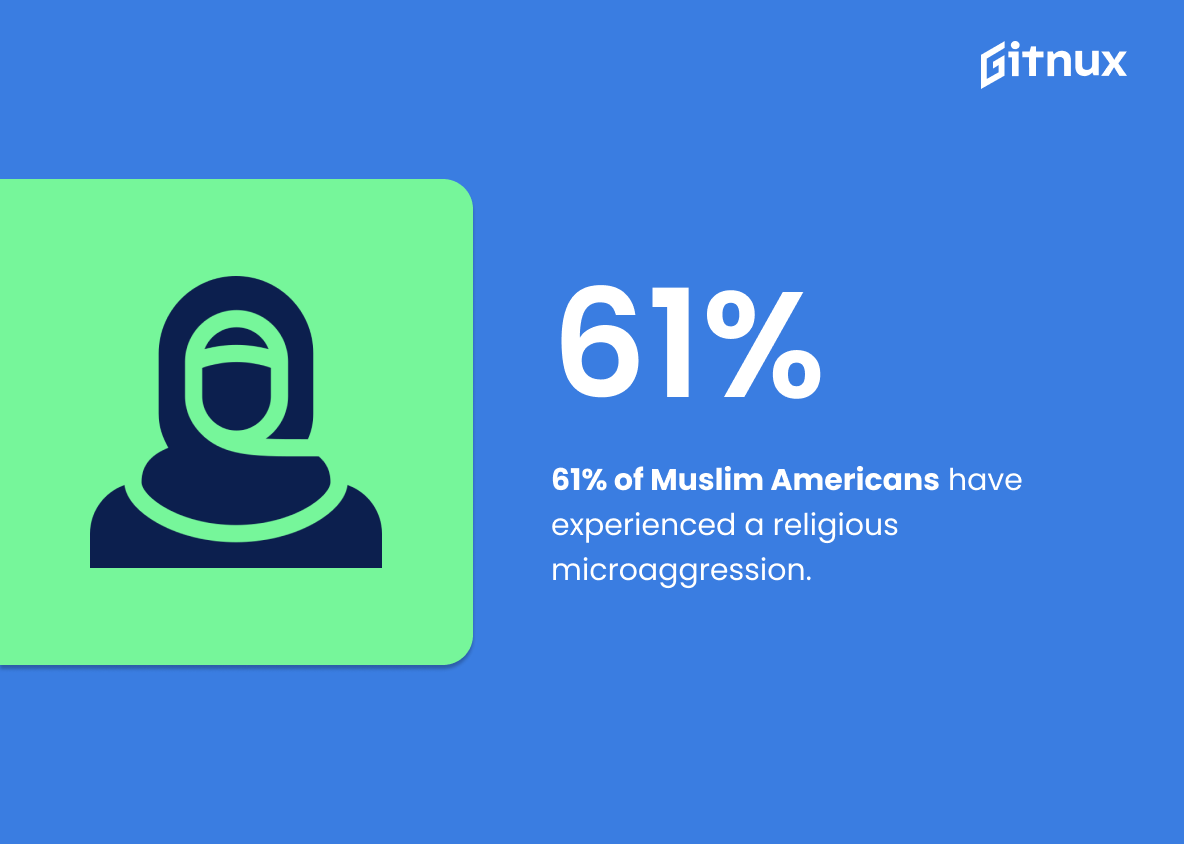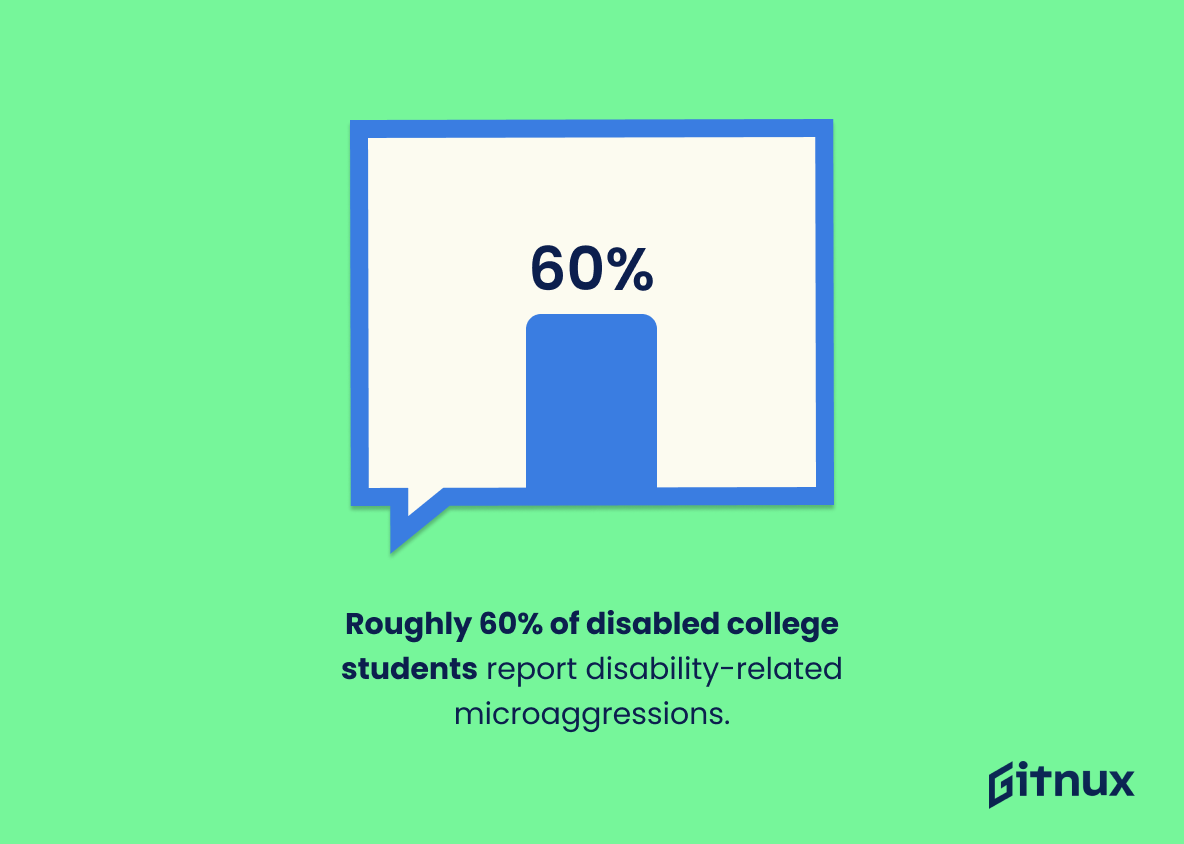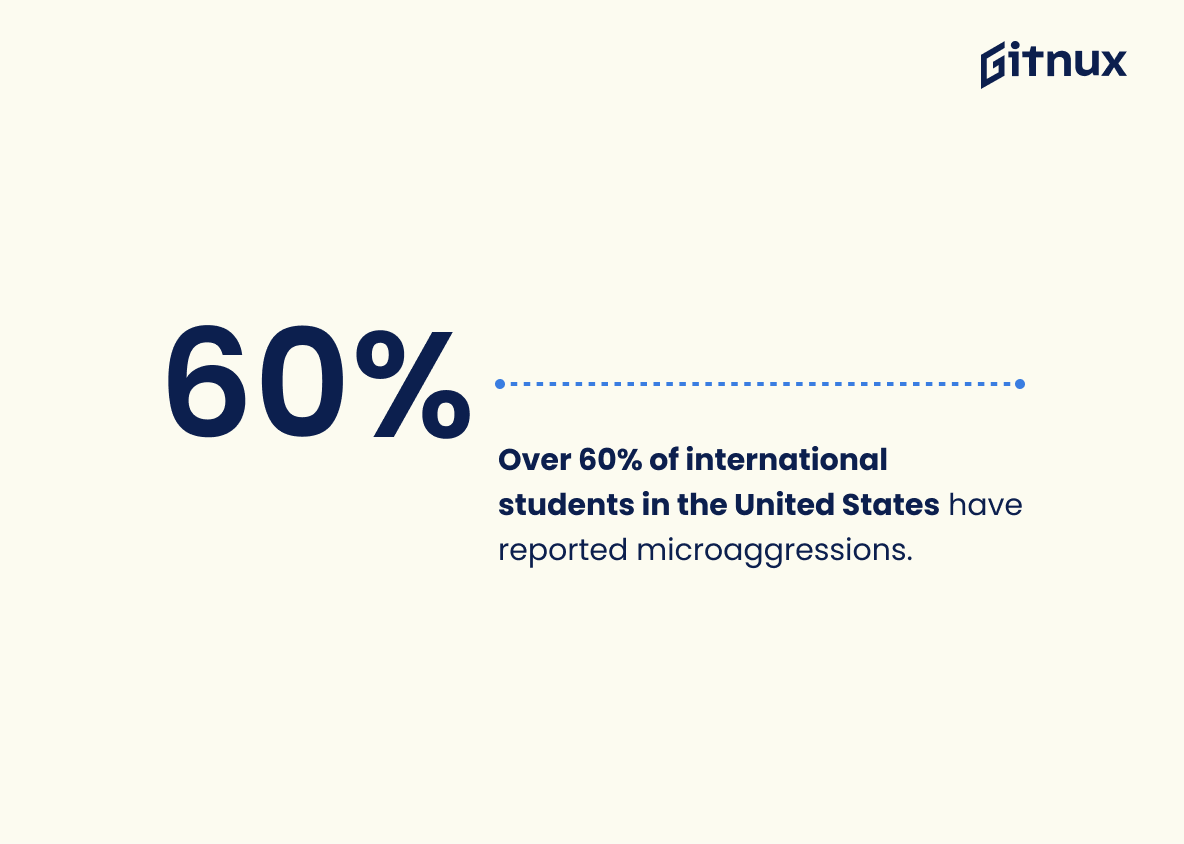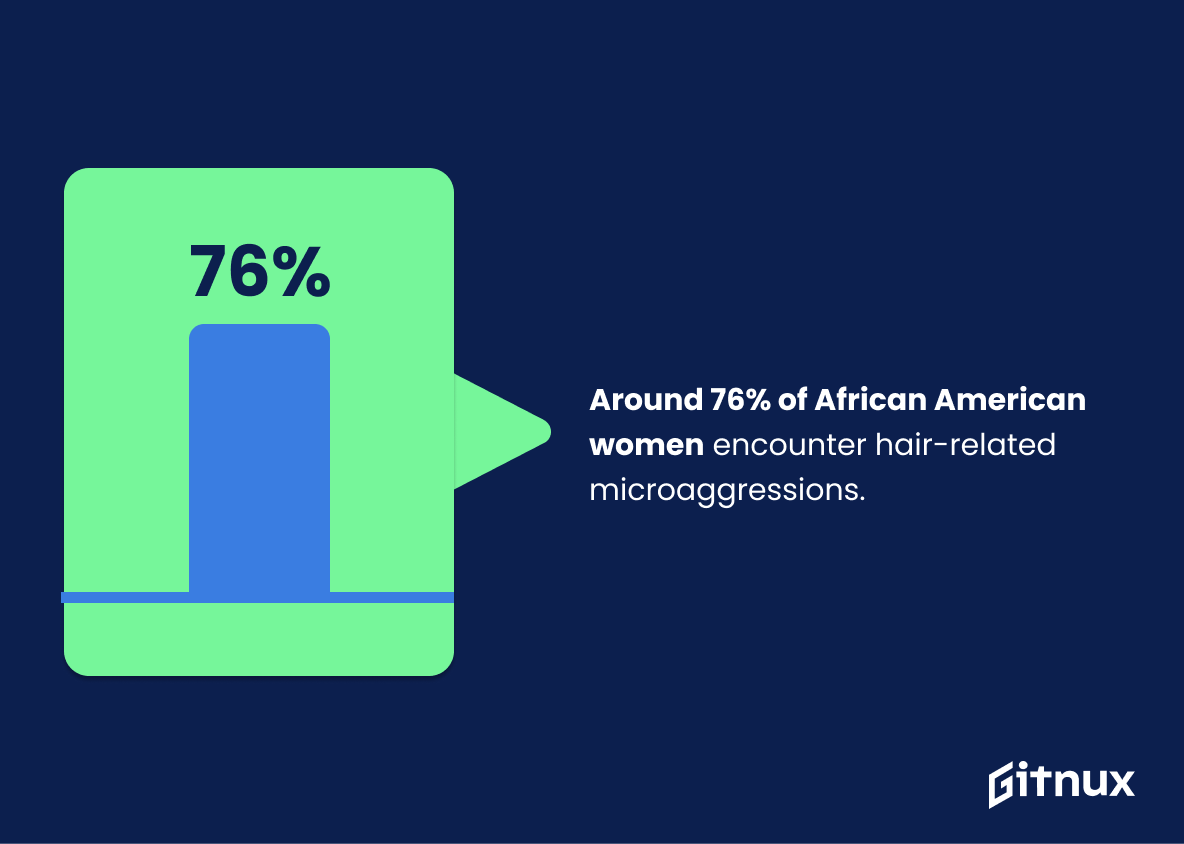Microaggressions are a form of discrimination that can have serious psychological and emotional consequences for those who experience them. Unfortunately, statistics show that microaggression is an all-too-common occurrence in many different contexts. This blog post will explore the prevalence of microaggressions among various minority groups by examining 20 recent studies on the topic.
The first study found that 73% of minority participants had experienced microaggressions within the past six months. The second revealed 32.5% of college students reported witnessing or experiencing microaggressions at least once weekly, while approximately 81% of Latinx individuals reported experiencing workplace microaggressions according to another study. Additionally, 72.8% of LGB individuals were found to have experienced sexual orientation related microaggresisons and around 50% women in STEM fields report having been subjected to such behavior as well as 85.5 % non-binary college students reporting similar experiences during their time in school . Furthermore, 75 % African Americans had encountered racial bias at work and 68 % people color faced racial prejudice on campus according to two separate research projects respectively . Moreover , 56 percent targets indicated they’d gone through 10 or more episodes whereas 80 percent POCs suffered from race/ethnicity based aggression when studying abroad . In addition , nearly half LGBTQ+ learners endured mistreatment due educational settings with over 81 per cent Asian American facing racism plus 61 per cent Muslim Americans being subject religious bigotry too . Approximately 70 native/indigenous persons also claimed enduring ethnic background linked hostility whilst seventy five transgender folk complained about gender identity associated maltreatment lastly sixty disabled scholars mentioned disability connected abuse was common place amongst them too.. Finally 87 Black females stated they’d felt both race & gender based animosity .. All these figures demonstrate how pervasive this issue has become across multiple demographics today which makes it even more important for us take action against it now.
This statistic is a powerful reminder of the prevalence of microaggressions in the lives of minority individuals. It highlights the need for greater awareness and understanding of the issue, as well as the need for more effective strategies to combat it. It also serves as a call to action for those in positions of power to take steps to ensure that all individuals are treated with respect and dignity.
32.5% of college students reported witnessing or experiencing microaggressions at least once weekly.
This statistic is a stark reminder of the prevalence of microaggressions in college settings. It highlights the fact that a significant portion of college students are exposed to these subtle forms of discrimination on a regular basis, and that this is an issue that needs to be addressed.
Microaggression Statistics Overview
85.5% of non-binary college students reported experiencing microaggressions during their time in college.
This statistic is a powerful reminder of the prevalence of microaggressions in college settings, particularly for non-binary students. It highlights the need for greater awareness and understanding of the impact of microaggressions, and the importance of creating a safe and inclusive environment for all students.
75% of African Americans had experienced racial microaggressions at work.
This statistic is a stark reminder of the prevalence of racial microaggressions in the workplace. It highlights the need for employers to take proactive steps to create a safe and inclusive environment for all employees, regardless of race. It also serves as a call to action for individuals to be aware of their own biases and to take steps to ensure that they are not perpetuating racism in the workplace.
68% of college students who are people of color experienced racial microaggressions.
This statistic is a stark reminder of the prevalence of racial microaggressions in college campuses. It highlights the fact that people of color are disproportionately affected by these subtle forms of discrimination, and that more needs to be done to create an inclusive and equitable environment for all students.
56% of microaggression targets have experienced microaggressions 10 or more times.
This statistic is a stark reminder of the prevalence of microaggressions in our society. It highlights the fact that many people are subjected to these subtle forms of discrimination on a regular basis, and that the problem is far from being solved. It also serves as a call to action, urging us to take steps to reduce the frequency of microaggressions and create a more inclusive environment for everyone.
About 80% of college students of color experience microaggressions related to their race, ethnicity, or nationality.
This statistic is a powerful reminder of the prevalence of microaggressions experienced by college students of color. It highlights the need for greater awareness and understanding of the impact of these subtle forms of discrimination. It also serves as a call to action for universities and other institutions to take steps to address this issue and create a more inclusive environment for all students.
61% of Muslim Americans have experienced a religious microaggression.
This statistic is a stark reminder of the prevalence of religious microaggressions against Muslim Americans. It highlights the need for greater awareness and understanding of the impact of such microaggressions on the lives of Muslim Americans. It also serves as a call to action for those in positions of power to take steps to ensure that all individuals, regardless of their faith, are treated with respect and dignity.
Approximately 60% of disabled college students report experiencing microaggressions related to their disability.
This statistic is a powerful reminder of the prevalence of microaggressions experienced by disabled college students. It highlights the need for greater awareness and understanding of the challenges faced by disabled students, and the importance of creating an inclusive and supportive environment for them. It also serves as a call to action for universities and other educational institutions to take steps to address this issue and ensure that disabled students are able to access the same opportunities as their non-disabled peers.
More than 60% of international students studying in the United States have reported experiencing microaggressions.
This statistic is a stark reminder of the prevalence of microaggressions experienced by international students in the United States. It highlights the need for greater awareness and understanding of the issue, as well as the need for more effective strategies to address it.
About 76% of African American women report experiencing microaggressions due to their hair texture or natural hair.
This statistic is a stark reminder of the prevalence of microaggressions against African American women due to their hair texture or natural hair. It highlights the need for greater awareness and understanding of the issue, as well as the need for more effective strategies to combat it. It also serves as a call to action for those in positions of power to take steps to ensure that African American women are not subjected to such discrimination.
Conclusion
The statistics presented in this blog post demonstrate the prevalence of microaggressions across a variety of minority groups. From college students to professionals, 73-87% of individuals reported experiencing microaggressions within the past six months or more frequently. These experiences were related to race/ethnicity, gender identity, sexual orientation, disability status and other aspects of their identities. The data also showed that 56-81% had experienced 10 or more instances during this time period as well as witnessing others experience them on at least a weekly basis. This highlights how pervasive these forms of discrimination are and underscores the need for further research into understanding why they occur and what can be done to prevent them from happening in the future.
References
0. – https://www.books.google.ca
1. – https://www.link.springer.com
2. – https://www.tigerprints.clemson.edu
3. – https://www.researchgate.net
4. – https://www.tandfonline.com
5. – https://www.ncbi.nlm.nih.gov
